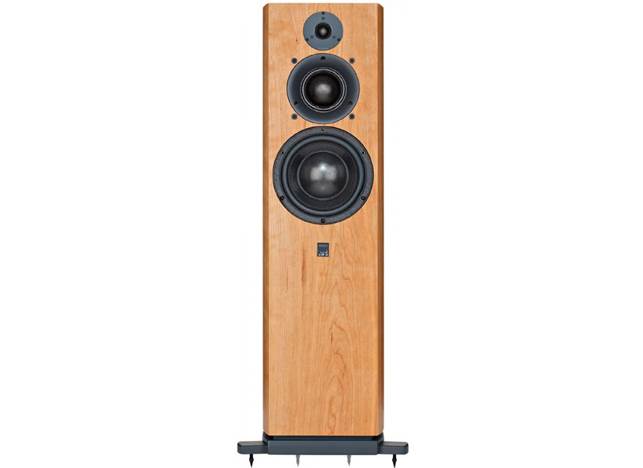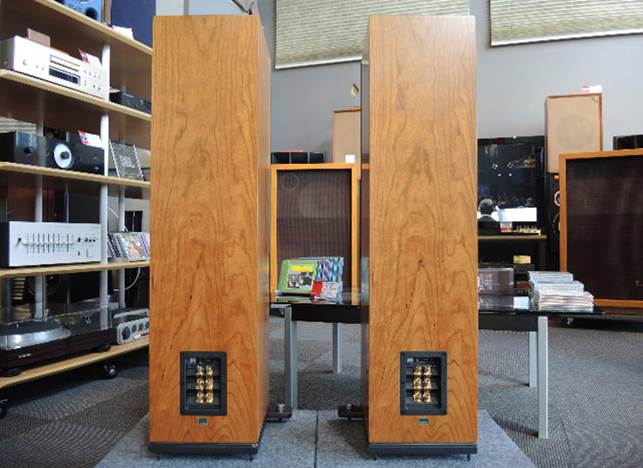In the SCM40, ATC has a sizeable floorstanding
loudspeaker that's set way away from the fray
There’s something odd about ATC’s SCM40 - it doesn’t look or
feel like almost any other loudspeaker in its price class. It’s almost as if
someone has forgotten to style it, like they’ve taken three drivers and put
them in a box designed to do the job and then gone home. This is in marked
contrast to many rivals, which have all kinds of stylistic flourishes. Despite
looking rather ‘old school’ - albeit in a timeless sort of way - the SCM40 is
actually a new model that came out in 2013, replacing a 2007 design of the same
name that looked as if it had been launched in 1988! ATC, it seems, doesn’t pay
too much attention to matters of fashion.

ATC SCM40 front
view
Construction quality is another matter. There is absolutely
nothing about this speaker to suggest it is built to its price, and you’re
reminded of this when you try to move it. The drive units look highly
anachronistic, and that’s because they are - especially the midband driver. The
Gloucester company began its life building drive units for professional monitor
speakers, and then started making its own. Founder Billy Woodman seems as
fascinated by transducers as he was 40 years ago when ATC was born, and it has
a dome mid unit unique to this marque.
Very few companies make midrange domes these days, because
they’re hard to get right. Instead, most prefer to use a small version of a
coned bass driver to handle these frequencies.The benefit of a dome, as well as
excellent dispersion, is that it is phase-coherent with the dome tweeter -
which is to say it radiates sound waves in a similar manner. This brings
excellent integration to that critical tweeter/midrange driver relationship,
and you can hear it in every speaker so designed, from the classic Yamaha
NS-1000M to the SCM40. This 75mm soft dome mid driver uses a hand-doped acrylic
diaphragm and suspension system, using a “secret ATC formula”. It mates to an
ATC-designed and built 25mm dome tweeter with a doped polyester diaphragm and
suspension, with alloy wave guide. The bass driver is 164mm in diameter and
features a hand coated paper pulp diaphragm, chosen for its balance of low
mass, damping and rigidity, and there’s a huge motor assembly behind.

ATC SCM40 rear
view
A three-element crossover is fitted, comprising a low pass
filter, band pass filter and high pass filter. The efficiency of the system is
set by the bass driver with the mid and HF padded down accordingly, the company
says, so it’s kept as simple as possible - this is achievable because the
drivers are designed around it. As with all ATC three-ways, the crossover
points are 380Hz and 3.5kHz. One problem with this speaker is that it’s not particularly
easy to drive. ATC says its impedance curve is flat, so the amplifier shouldn’t
require Herculean reserves of current, but it sure does need watts! Quoted
sensitivity is low for a big box - 85dB/1W/1m - which means over 60W is the
order of the day. I try several solid-state amplifiers and all get hot and
slightly bothered at very high volumes. This is in part because ATC has gone
for an infinite baffle cabinet, which asks more from whatever is driving it.
How to compare
Selling for $5,800, Spendor's D7 is an established
favourite. It is extremely well built and finished, displays real engineering
depth and turns in a very fine sound. It manages to deftly balance out detail
retrieval and musicality, while being easy to drive and easy going on ancillaries.

Spendor's D7 black
edition
Not so the ATC SCM40, which is an altogether more revealing
speaker - it cuts right into what's really good in the recording and tells you
all about it as bluntly as a Yorkshireman in a bad mood. If the ancillaries and
recording are great the ATC flies ahead of the Spendor; most obvious is the
brilliant bass grip and searing midband detail. They're both excellent speakers
and worth auditioning.